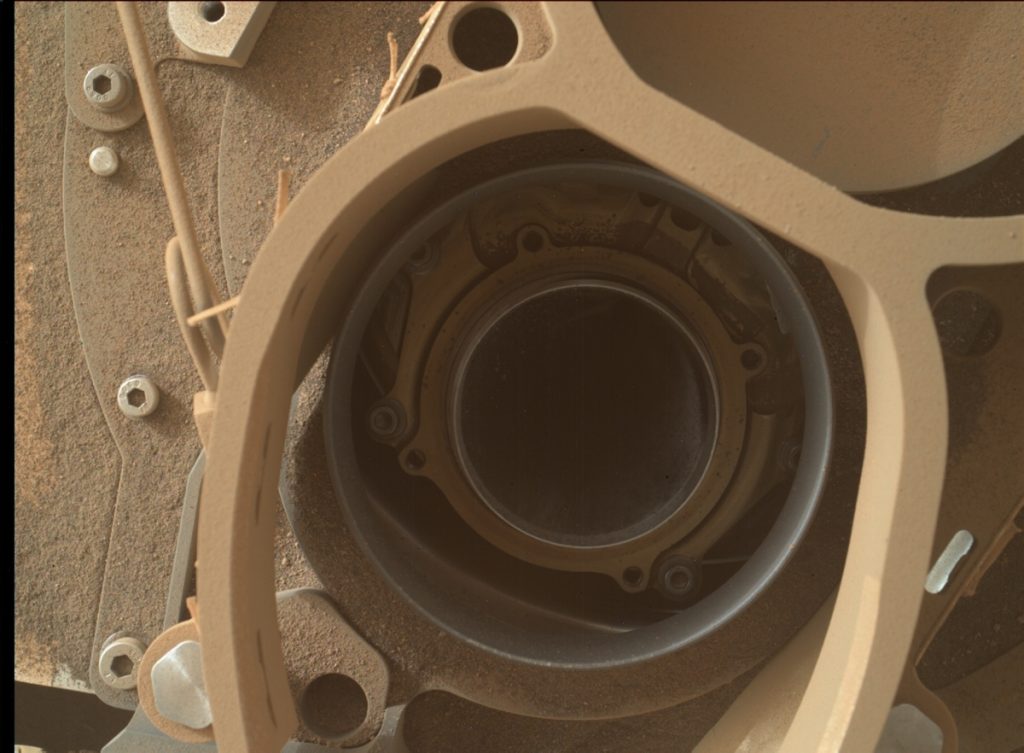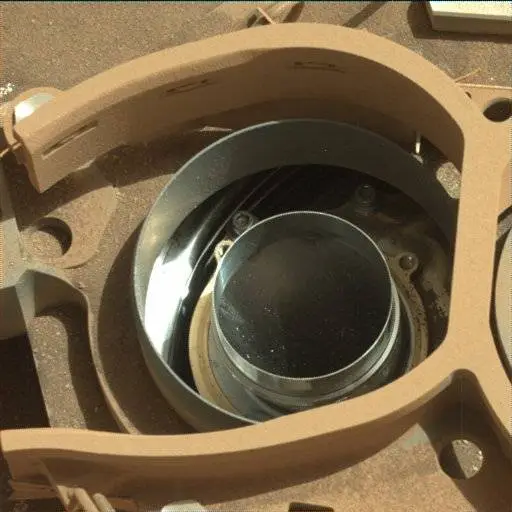Introduction
NASA’s Perseverance rover continues to advance our understanding of Mars with its meticulous exploration of the Martian surface. On Sols 4273 and 4274, Perseverance undertook significant preparatory activities that set the stage for future scientific endeavors. These sols marked a pivotal moment in the rover’s mission, showcasing the careful planning and execution that underpin successful Mars exploration. This comprehensive article delves into the details of these activities, explores their scientific significance, and places them within the broader context of Mars exploration.
Perseverance Rover Overview
Launched on July 30, 2020, Perseverance represents the latest chapter in NASA’s series of Mars rovers, following in the footsteps of Spirit, Opportunity, and Curiosity. It is designed to explore the Martian surface with advanced scientific tools and technologies, aiming to uncover evidence of past life, collect samples, and prepare for future human missions.
Mission Goals
The mission of Perseverance encompasses several key objectives:
- Search for Signs of Ancient Life: One of the primary goals is to investigate whether Mars ever hosted microbial life. The rover’s instruments are designed to analyze rocks and soil for signs of ancient life forms.
- Sample Collection: Perseverance is equipped to collect and store samples of Martian rock and soil. These samples are intended to be returned to Earth by future missions for detailed analysis.
- Study Mars’ Climate and Geology: The rover’s scientific payload allows for an in-depth study of Mars’ climate and geological features, providing insights into the planet’s past environment.
- Prepare for Human Exploration: Perseverance is also tasked with testing new technologies and strategies that will support future human missions to Mars, including in-situ resource utilization and surface mobility.
Sols 4273-4274: Key Activities
During Sols 4273 and 4274, Perseverance engaged in a series of preparatory activities crucial for the mission’s success. These activities were designed to ensure that the rover is fully equipped and ready for upcoming scientific tasks.
1. Preparation for Sample Collection
Sample Collection Planning
- Objective: The primary focus of Sols 4273 and 4274 was to prepare the rover’s sample collection system for future operations. This involved calibrating and testing the various components of the sample collection and caching system.
- Activities: The rover conducted a series of tests to verify the functionality of its drill and sampling tools. This included performing dry runs and simulated operations to ensure that the equipment could handle the Martian soil and rock.
- Significance: Ensuring the reliability of the sample collection system is critical for the mission’s success. Proper functioning of these tools is essential for obtaining high-quality samples that will be analyzed in detail.
Calibration and Testing
- Objective: Calibration of the rover’s instruments is vital for accurate scientific measurements. During these sols, Perseverance focused on calibrating its various sensors and cameras.
- Activities: The calibration process involved capturing images of known reference targets and comparing the results with expected values. This helped in fine-tuning the instruments to ensure precise data collection.
- Significance: Accurate calibration ensures that the data collected by Perseverance is reliable and that scientific measurements are consistent. This is crucial for interpreting the results and making meaningful conclusions.
2. Environmental Monitoring
Atmospheric Analysis
- Objective: Understanding Mars’ atmosphere is essential for interpreting surface conditions and planning future activities. During Sols 4273 and 4274, Perseverance conducted atmospheric monitoring.
- Activities: The rover used its weather sensors to measure atmospheric pressure, temperature, and humidity. These measurements provide valuable data on Martian weather patterns and help in assessing the rover’s operational environment.
- Significance: Atmospheric data is crucial for understanding Mars’ climate and weather. It also informs planning for future rover operations and provides insights into the challenges of operating on the Martian surface.
Surface Observations
- Objective: Observing the Martian surface is key to understanding its geology and planning exploration routes. Perseverance captured high-resolution images of the surrounding terrain.
- Activities: The rover’s cameras took detailed images of the surface, including rock formations, dust, and other features. These images are used to identify potential areas of interest for further investigation.
- Significance: Surface observations help in identifying targets for scientific analysis and guiding the rover’s movement. Understanding the terrain is essential for safe navigation and effective exploration.
3. Data Transmission and Analysis
Data Collection
- Objective: Collecting and transmitting data is a critical part of the rover’s operations. During these sols, Perseverance focused on gathering and sending data back to Earth.
- Activities: The rover collected data from its scientific instruments and transmitted it to mission control via the Deep Space Network (DSN). This process involves compressing and encoding data to ensure efficient transmission.
- Significance: Timely and accurate data transmission is essential for mission operations. The data collected provides scientists with the information needed to make informed decisions about the rover’s activities.
Data Analysis
- Objective: Analyzing the data collected by Perseverance is crucial for interpreting results and planning future activities. During Sols 4273 and 4274, scientists analyzed the data received from the rover.
- Activities: The data was examined for quality and completeness. Scientists evaluated the results of the calibration tests, atmospheric measurements, and surface observations to ensure that everything was functioning correctly.
- Significance: Data analysis helps in understanding the current status of the rover and its instruments. It also informs decisions about the next steps in the mission and identifies any issues that need to be addressed.
4. Mission Planning and Strategy
Upcoming Objectives
- Objective: Planning for upcoming activities is essential for the success of the mission. During these sols, the team reviewed and planned the rover’s next set of objectives.
- Activities: The mission team developed detailed plans for the rover’s scientific tasks, including sample collection and geological analysis. This involved reviewing data, assessing potential targets, and coordinating with other mission activities.
- Significance: Effective planning ensures that the rover’s activities are aligned with the mission’s goals. It also helps in optimizing the use of resources and managing the rover’s time on Mars.
Coordination with Other Missions
- Objective: Coordinating with other Mars missions is important for maximizing the scientific return and avoiding conflicts. During Sols 4273 and 4274, Perseverance coordinated with other NASA and international missions.
- Activities: The mission team communicated with other mission teams to share data, collaborate on scientific objectives, and coordinate activities. This included coordinating observations and avoiding interference with other missions.
- Significance: Collaboration and coordination with other missions enhance the overall scientific return and ensure that resources are used efficiently. It also fosters a collaborative approach to exploring Mars.

The Broader Context of Mars Exploration
Historical Context
- Previous Missions: Perseverance builds on the achievements of previous Mars missions, including Spirit, Opportunity, and Curiosity. Each mission has contributed valuable knowledge about Mars’ geology, climate, and potential for life.
- Scientific Advancements: Advances in technology and science have improved our ability to explore and study Mars. Perseverance represents the latest advancements in rover design and scientific instrumentation.
Future Exploration
- Human Missions: The data collected by Perseverance is crucial for planning future human missions to Mars. Understanding the planet’s environment, resources, and potential hazards is essential for ensuring the safety and success of human exploration.
- Sample Return Missions: Perseverance is part of a broader effort to return Martian samples to Earth. These samples will provide valuable insights into the planet’s geology and potential for past life, furthering our knowledge of Mars.
Public Engagement and Education
Inspiring the Public
- Educational Resources: The images and data from Perseverance are used to create educational resources that inspire and inform the public about space exploration and science. These resources help engage students and the general public in the excitement of planetary exploration.
- Media Coverage: The stunning visuals and discoveries from Mars capture the imagination of people around the world. Media coverage highlights the achievements of space exploration and the ongoing quest to understand our neighboring planet.
Citizen Science
- Public Involvement: The public can participate in Mars exploration through citizen science initiatives. By analyzing images and data from Mars, enthusiasts contribute to scientific discoveries and gain a deeper appreciation for the complexities of space exploration.
- Social Media: Social media platforms are used to share images and updates from Perseverance, allowing people to follow the mission’s progress and engage with the latest discoveries.
Conclusion
The activities conducted by Perseverance on Sols 4273 and 4274 represent a crucial phase in the rover’s mission, preparing it for future scientific endeavors and ensuring the success of its exploration goals. These activities, including sample collection preparation, environmental monitoring, and data analysis, play a vital role in advancing our understanding of Mars.
As Perseverance continues its journey across the Martian surface, the insights gained from these activities will pave the way for future discoveries and inform the planning of subsequent missions. The ongoing exploration of Mars represents a monumental achievement in human space exploration, and the detailed preparations made by Perseverance are a testament to the ingenuity and dedication of the mission team.


















































Discussion about this post